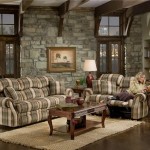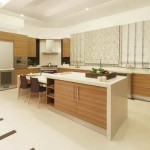The right kitchen countertop can easily become the focal point of your cooking experience. From prepping meals to having breakfast, a central counter space encourages everyone to come together over the creation and enjoyment of food.
Natural stone countertops help give your cooking space an elegant, timeless feeling. The type of stone you choose helps communicate the atmosphere you want your kitchen to have. No two pieces of stone are perfectly identical; from beautiful marbled granite to translucent onyx, the unique piece of stone that becomes your countertop will be unlike any other.
The process of designing a natural stone counter is both involving and fun. As you choose the stone you want, keep the unique needs of your home in mind; the perfect countertop is out there.
Decide What Type of Countertop Your Home Needs
Before you jump into the stone selection process, decide what kind of design you are looking to add to your home. Different types of stone have different properties. Some are completely scratch resistant, while others need to avoid contact with acidic substances like vinegar or lemon juice. Due to this, the purpose of you counter actually plays a heavy role in your design process.
When looking for a new countertop, look for a stone that is sanitary and scratch resistant as well as durable. Heat resistant stones make a great choice to surround a stove top. If your stone counter is meant to surround a sink, avoid stone that will break down if it’s splashed with cleaning materials; marble in particular can be vulnerable to chemical attack.
Consider Your Home’s Atmosphere
The function of your counter is important, but so is the atmosphere you want to create. Take a moment to consider what feeling your new countertop should evoke. Do you want something dark, solid, and stable? Or do you want a shimmering gemstone design that captures the attention of the room? As you browse stone samples, consider the way the color will impact you every morning as you cook breakfast.
Visit a Natural Stone Yard
The only way to know if a stone is right for your countertop is to see it in person. Once you know what kind of counter you need and what look you want for your cooking space, visit a stone yard near you to see the different kinds of stone that are available for your design. Pay careful attention to the look, quality, and feel of each stone; the surface will be your countertop for many years to come.
Granite is a hard, temperature-resistant stone, and an incredibly popular countertop choice. The material is non-porous and can be easily sanitized, and polished granite surfaces are relatively scratch resistant. There are many different types of granite with different shades and patterns, creating a wide variety of possibilities for your design.
Onyx is a translucent decorative stone, making it a uniquely stunning choice for your countertop. Layered colored veins run through each piece, and the translucence of the material means that your counter can be backlit for an impressive effect. Although it doesn’t match granite for resistance to abrasion or heat, the elegant appearance of onyx can’t be denied.
Gemstone slabs also offer a beautiful option for your countertop design. From quartz to jade, the different varieties of gems are available in many different colors and patterns. Each different type of gem has different properties; when you find one you like, speak to your contractor about the kind of counter you can design with it. A gemstone breakfast bar is sure to be an impressive conversation piece.
Marble countertops are a classic for a reason. The surface is smooth to the touch, and the veins of color add subtle interest to any design. Marble is rather vulnerable to acidic substances, so marble countertops need to be treated with care; but when properly maintained, they can add elegance to your home for a lifetime.
Soapstone is an extremely heat-resistant stone, making it a great choice to surround a stove top. Although the material is somewhat susceptible to scratching, it can be treated to prevent damage during normal use. Soapstone usually comes in different shades of grey, and can fit into a wide variety of different design schemes.
Bring Samples Into Your House
After you’ve browsed the different stones available at the stone yard, speak to the owners about taking samples into your home. You can’t really tell what your countertop will look like until you’ve seen the stone under your home’s natural light. Try placing samples on your current counters or holding them up to the window or the overhead lighting. Look for the way light bounces off the polish, whether the stone sample is see-through, and whether the colors look good with your current design.
Incorporate the Countertop into Your Final Design
When you finally know what stone you want to use for your countertop, incorporate that material into the rest of your design process. A virtual design software can help you visualize what your completed design will look like; make sure to select your chosen stone type for the model countertops. The software will let you model what different islands will look like in your home, and help you create a layout that gives you space to both cook and relax.
You should also bring your stone samples with you when you start meeting with contractors, along with any virtual design mock-ups you have made of your ideal layout. The final elements of the design will likely be completed by the contractors, so it’s important that you clearly communicate the look and feel you want the project to have.
A well designed countertop can completely change the way your cooking space looks and feels. By educating yourself about the different kinds of stone, considering the importance of the counter’s function, and viewing the stone samples in person, you are ensuring that your design meets the needs of your family and your home. Your new, elegant countertop is closer than you think, and will completely change the way your kitchen feels.









